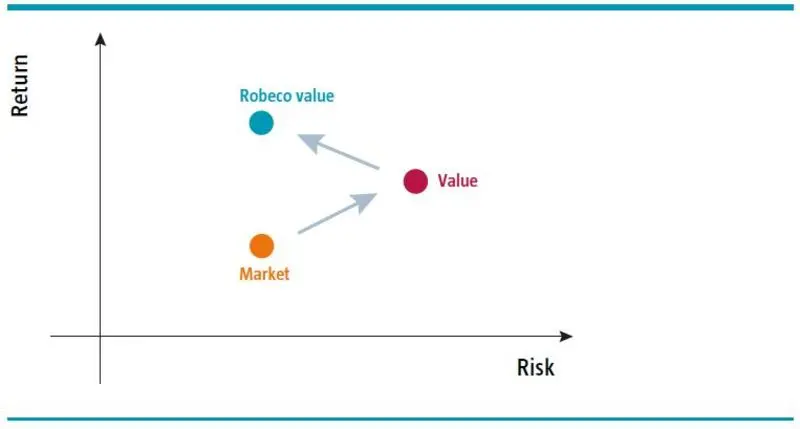Disclaimer
Please read this important information before proceeding further. It contains legal and regulatory notices relevant to the information contained on this website.
The information contained in the Website is NOT FOR RETAIL CLIENTS – The information contained in the Website is solely intended for professional investors, defined as investors which (1) qualify as professional clients within the meaning of the Markets in Financial Instruments Directive (MiFID), (2) have requested to be treated as professional clients within the meaning of the MiFID or (3) are authorised to receive such information under any other applicable laws. The value of the investments may fluctuate. Past performance is no guarantee of future results. Investors may not get back the amount originally invested. Neither Robeco Institutional Asset Management B.V. nor any of its affiliates guarantees the performance or the future returns of any investments. If the currency in which the past performance is displayed differs from the currency of the country in which you reside, then you should be aware that due to exchange rate fluctuations the performance shown may increase or decrease if converted into your local currency.
Robeco Institutional Asset Management UK Limited (“RIAM UK”) markets the Funds of Robeco Institutional Asset Management B.V. (“ROBECO”) to institutional clients and professional investors only. Private investors seeking information about the Robeco Funds should consult with an Independent Financial Adviser. ROBECO will not be liable for any damages or losses suffered by private investors accessing the website.
RIAM UK is an authorised distributor for ROBECO Funds in the UK and has marketing approval for the funds listed on the website, all of which are UCITS Funds. ROBECO is authorised by the AFM and subject to limited regulation by the Financial Conduct Authority.
Many of the protections provided by the United Kingdom regulatory framework may not apply to investments in ROBECO Funds, including access to the Financial Services Compensation Scheme and the Financial Ombudsman Service. No representation, warranty or undertaking is given as to the accuracy or completeness of the information on this website.
If you are not an institutional client or professional investor, you should therefore not proceed. By proceeding, please note that we will be treating you as a professional client for regulatory purposes and you agree to be bound by our terms and conditions.
If you do not accept these terms and conditions, as well as the terms of use of the website, please do not continue to use or access any pages on this website.
Quantitative investing
Value factor
Equities realize better returns if their current value is higher than their current price. A value strategy makes use of valuation ratios to select stocks that are attractively priced relative to their fundamentals.
The price-to-book and price-earnings ratios are both frequently used. Stocks with low prices relative to their fundamentals are expected to appreciate in the future to properly reflect the real value of the company. However, the pitfall here is that an increased risk of insolvency can be the reason for a low valuation. A company that has an outdated business model, for instance, runs a greater risk of becoming insolvent, and its stock price will reflect this by having an apparently low valuation relative to its book value.
Figure 10. Improved risk-return ratio with Robeco's Value factor approach

Source: Robeco, Quantitative Research, 2014
Robeco’s approach to value investing is to make stock-selection adjustments that take a higher level of risk into account. This means that stocks that are indeed undervalued are selected, in contrast to companies whose low valuation merely reflects their higher level of risk.















